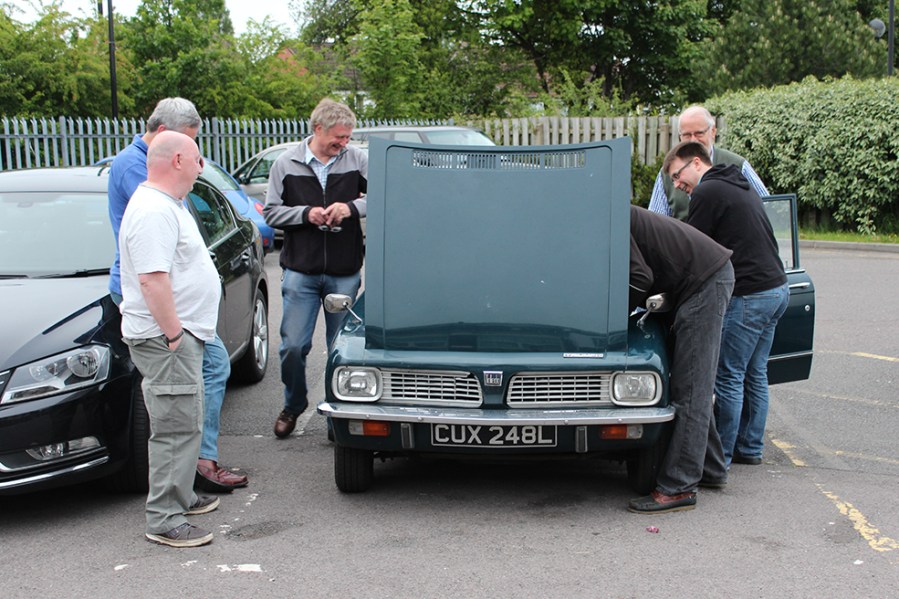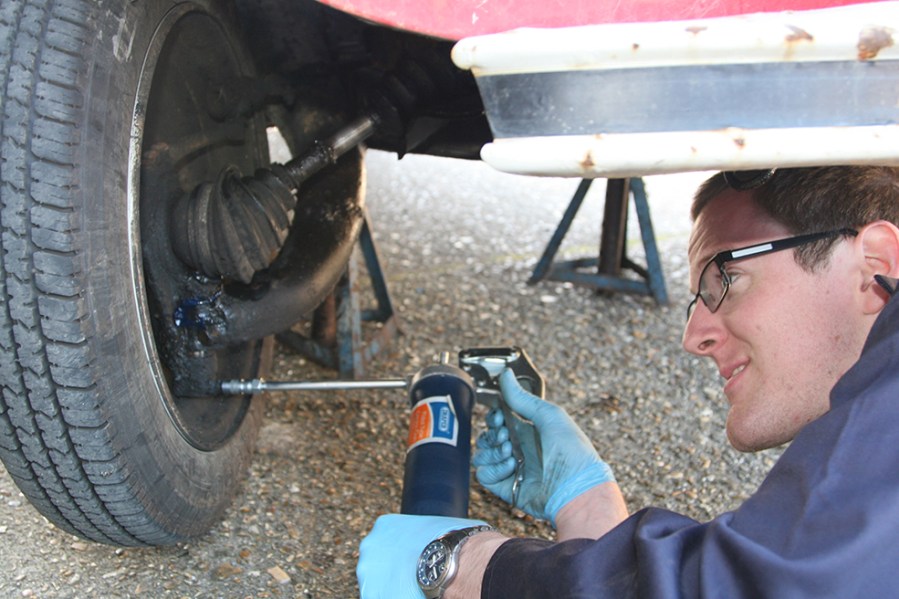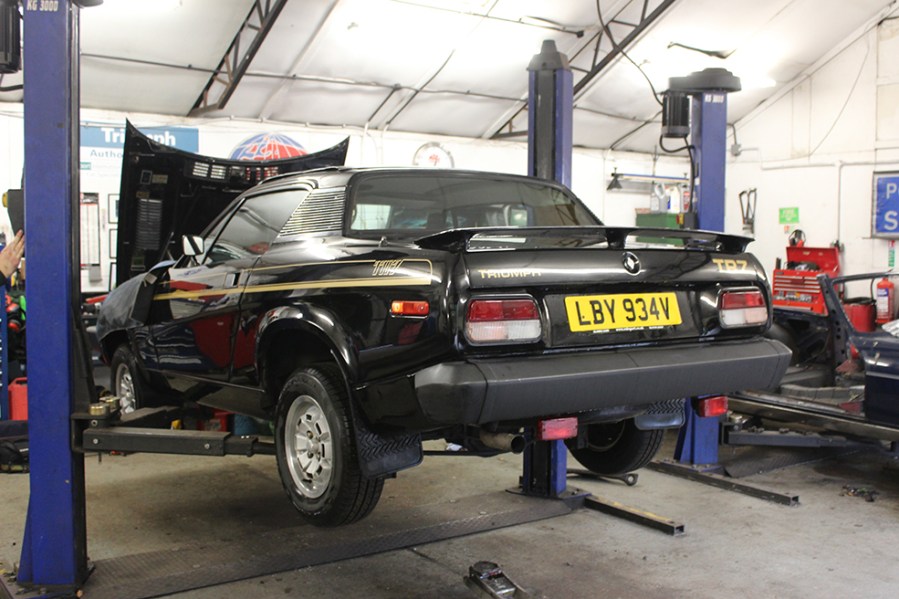Your first classic car restoration project can be daunting. Here are our tips to cut out some of the disappointment and heartache
Words: Gerard Hughes
Taking on a classic car restoration is a significant milestone for any enthusiast. For some, the journey begins with a cherished vehicle that’s either been purchased as a runner, or has simply grown too tired to stay on the road. For others, the challenge lies in rescuing a basket case, working steadily towards the dream car they’ve always envisioned.
The good news is that, no matter where you start, even the most daunting project can be brought back to life with the right approach. With careful planning, a solid grasp of the basics, and a willingness to seek guidance or professional help, you’ll find that almost anything is achievable.
Yes, it will demand time, effort, and patience, but when done well, classic car restoration is deeply rewarding. To help make your experience more satisfying than stressful, here are our top tips for first-time restorers.
Be prepared to learn new skills
Restoring a classic involves many processes, some of which you may already be well versed in, while others might be totally new. Aside from good old spannering – and depending on how much of the restoration you’re prepared to take on – you’ll need to develop skills in bodywork and welding, paint, electrics, and even basic upholstery.
You may well be able to pick these skills up from friends, family, fellow club members, or even tutorials on YouTube (these aren’t to be sniffed at) – but don’t discount learning from professionals. Many colleges around the country run relevant night classes or even full time courses. Remember: learning how to do a job properly means that you’ll be in with a chance of being able to do it right, first time.

Join a classic car club
When embarking on your first restoration, there’s no reason not to join the club for your car. The club will be full of friendly people who are completely passionate, and a fair few of them will have been through a restoration or five themselves. This experience can save you a lot of time and money, as many members will know the car and its weaknesses inside and out.
A club may well have its own stocks of spares which as a member you’ll get access too – or at least knowledge of where to go to find them. Few organisations offer such an endless source of encouragement; many will take as much pleasure from seeing one of ‘their’ cars returned to its full glory as you will.
In today’s modern world, it’s also worth exploring the online element as an alternative (or supplement) to traditional club membership. The world of Facebook groups can be treacherous but the risk is worth the reward in our experience; a make-model specific group can be particularly useful when hunting for an elusive part or advice on difficult jobs.
Buy good tools and look after them
If you don’t own a comprehensive tool kit, once you start restoring a classic you soon will. If you’re even contemplating a restoration, you’ll need a decent set of hand tools – spanners, socket set, screwdrivers, hammers – the list goes on.
If you’re going shopping, buy the very best you can’t afford. Tools are going to get a hard time, so buying cheap is a false economy. Low quality tools will slow you down; more often than not these are likely to break, or just don’t work as they’re meant to. You may also want to investigate some essential power tools; an angle grinder is a versatile and vital tool, especially when stripping down a rusty hulk, while a good-quality power drill and maybe even a decent-capacity MIG welder should soon join the tool arsenal.
Enjoy small victories
The old hands (and many advice articles such as this) will tell you to approach the restoration process in a sensible and methodical manner. This is so that you don’t need to do any job twice. Also, restored components can be easily damaged in storage. For instance, the best place for re-trimmed seats is inside your finished car, not perched up in the rafters of your garage.
But as a restoration drags on, it can sometimes be a massive moral boost to see just one aspect of the car in its finished state. This can be a tiny indication of how great the project is going to be once it’s done. So whether that includes lovingly polishing the radiator grille or having the wheels blasted and painted, go for it: if it spurs you on and gives new energy for the job, don’t listen to anyone else.

Choose a realistic project car
Any restoration is tough enough without the added complication of elusive parts last produced in limited numbers in 1963. Serial, hardened restorers can be scuppered by poor parts supply, so if it’s your first time don’t make it any harder than you need it to be. Certain models have incredible aftermarket support, and you can buy practically anything you’re going to need brand new and off-the-shelf.
Nothing beats the thrill of turning up some treasure at an autojumble or on eBay, but the joy of trawling the world for basics like filters and brake parts gets very old, very quickly. The MGB, Volkswagen Beetle and Triumph saloons are popular for many reasons, not least that most parts can be found as easily as lifting the phone and flexing your credit card.
Buy for the right reasons
You’re going to be spending a lot of time with your car. Depending on how bad it is, you will be involved in every stage of buying, disassembly, sourcing parts and services, and then putting it all back together. So make sure it really is the car you want – make, model and spec. No compromises. Don’t be tempted by a classic you really don’t want. If you haven‘t found the right car yet, keep looking.
As with most hobbies, it’s important not to feel the need to buy on the basis of good investment; if you’re not completely into the car, there is nothing that’s going to get you through the long slog that awaits you. And without a doubt it will end up being moved on as an unfinished project.

Make (and stick to) a budget
You have to face facts: Mini or a Maserati, classic car restoration is not a cheap hobby. Even if you do all of the work yourself, the price of components alone soon adds up. This isn’t such an issue when you’re doing the job in stages and you have a chance to replenish the piggy bank before starting on the next step.
But you will always encounter a few surprises along the way. These may not be pleasant ones either – you may have heard the car running before you bought, but were you able to drive it? How’s the gearbox? Find the car, investigate parts prices, and get a figure for any professional input you’re considering. Once you’ve added it all up, we recommend adding at least 30 per cent on top!
Be realistic about time
We can’t stress how much time a restoration can consume. There is a lot of work in just assembling a car from a bare shell to a roadworthy, working machine – even if you have every component laid out in front of you ready to go like some huge Airfix kit.
You will quickly learn that things rarely go to plan. Parts might be difficult to source or take their time in arriving, or there may be delays in getting your components through a professional service. You might also fall into the familiar pattern of redoing jobs that were completed first. As you become more proficient, the standard of your earlier efforts are no longer good enough. So you do them again.
Be realistic in how long your restoration is going to take. Don’t take on a full restoration and promise your daughter that it will ready to drive her to the church on her wedding day in three months time. You may be full of the best intentions – the car, on the other hand, will almost certainly have other ideas!

Know your limits
We all like to think we can create showroom paint finishes straight from the spray gun, or rebuild engines while blindfolded. The truth is, most of us can’t. The number of people who can complete every job required to completely restore a car to the highest standards are a very rare breed. If you’re not one of them, that’s okay – it pays to recognise your own limitations. Do as much as you can but don’t beat yourself up if you don’t feel confident about tackling anything. Ask around, get some recommendations and find the cash to get the job done by a pro.
One more thing – certain jobs are simply best handled by a professional. Perhaps the best example is spray painting – you can spend a lot of time and money, make a lot of mess and have to handle quite toxic materials to simply get a satisfactory result.
Document, organise and take notes
When stripping the car down, don’t forget to label everything and take many photographs showing how components fit and, more importantly, how the wiring loom and any pipework runs along the chassis and through the engine bay. The wiring behind the dashboard can look like a cat’s cradle gone loopy, so label and photograph all the connections each time a switch or instrument is disconnected.
A handy supply of plastic zip top freezer bags is essential for putting small parts in – and when listing the contents on the bag, always use a permanent marker.
Focus on the fun
Don’t loose sight of the fact that classic car restoration is meant to be a fun process. Nobody is holding a gun to your head to make you do it, so try and enjoy every stage.
There’s always someone out there who has solved the problem you are facing and can often offer a simple solution to what seems a daunting stage of the restoration. The classic car industry has never been in better shape and pretty much everything you need is out there – from tools and consumables, quality parts for an enormous range of cars, advice, online tutorials, and even training to gain those much-needed specialist skills.
We guarantee that when you finally roll your completed project out of the garage for the first time you will look back on the restoration process with pleasure and a great deal of satisfaction. Yes, even that cold winter’s night you spent scraping off all the old underseal by torchlight.
But be warned: taking something broken and rusty and restoring it back to better-than-new condition is a highly addictive process. This may well be your first classic car restoration, but get through it and it certainly won’t be your last.





